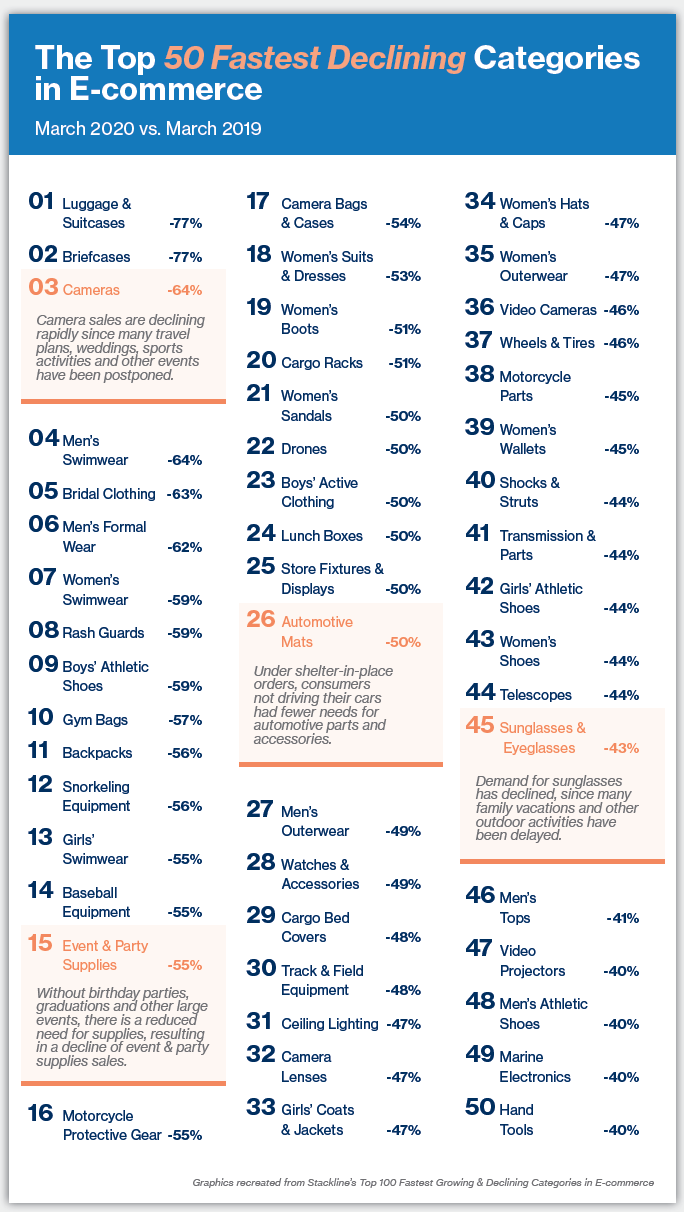E-commerce Post-COVID
Virtual shopping will likely remain at the center of the consumer retail experience for the foreseeable future.

This article is sponsored by Enterprise Purchasing Group. This story originally appeared in the Fall 2021 print edition of the Middle Market Growth Future of Work Special Report. Read the full report in the archive.
The U.S. has experienced a huge spike in e-commerce sales in the third-party fulfillment industry over the last few months. Sales are similar to those at peak season and, in some cases, order volume is even greater. I have been thinking a lot about what’s next, when it comes to new buying behaviors. At some point, when COVID becomes an unpleasant memory, what will shopping look like?

A study from Stackline.com¹ analyzed and compared U.S. e-commerce sales during March 2020 and March 2019. The findings: Luggage and briefcases, along with cameras, were the fastest declining product categories in e-commerce in March 2020—at the height of the pandemic. All kinds of clothing and outdoor products became undesirable as well. Conversely, the fastest growing e-commerce categories in March 2020 were disposable gloves, PPE, cough medicines and bread machines. Also within the top 25 items were all kinds of hygiene products, power generators and personal protection items. As we move further into a recovery phase, this mix will certainly change.
What became very clear in this crisis is that companies that were prepared with omnichannel marketing techniques—specifically within the e-commerce channel—and those that were able to adapt to the digital transformation taking place are thriving. “Digital transformation” is defined as “companies making their relevant offers and services consistent with a focus on customer experience, with e-commerce being the main element in keeping the business thriving.” The previous investment into e-commerce is keeping businesses alive.

The consensus, and my personal belief, is that e-commerce will remain the center of the retail experience. This pandemic was the catalyst that took it from greater than $602 billion in 2019 annual sales to growth of more than 20%, as brick-and-mortar sales continue to fall by approximately 14% annually.
We cannot be sure what the retail segment of physical shopping will look like in the future. However, based on consumer adaptability and behavior models, along with the onset of more shopping convenience and investments in digital transformation, consumers have become much more hooked on the new norm. And this new norm will be what drives the bottom line for many retailers for years to come.
There’s one thing I believe the pandemic didn’t alter: Most of the leading companies will differentiate themselves based on the experience that they deliver to their customers. Companies will continue to differentiate themselves in this new era. That much won’t change.
John Bevacqua is the president of Enterprise Purchasing Group.


